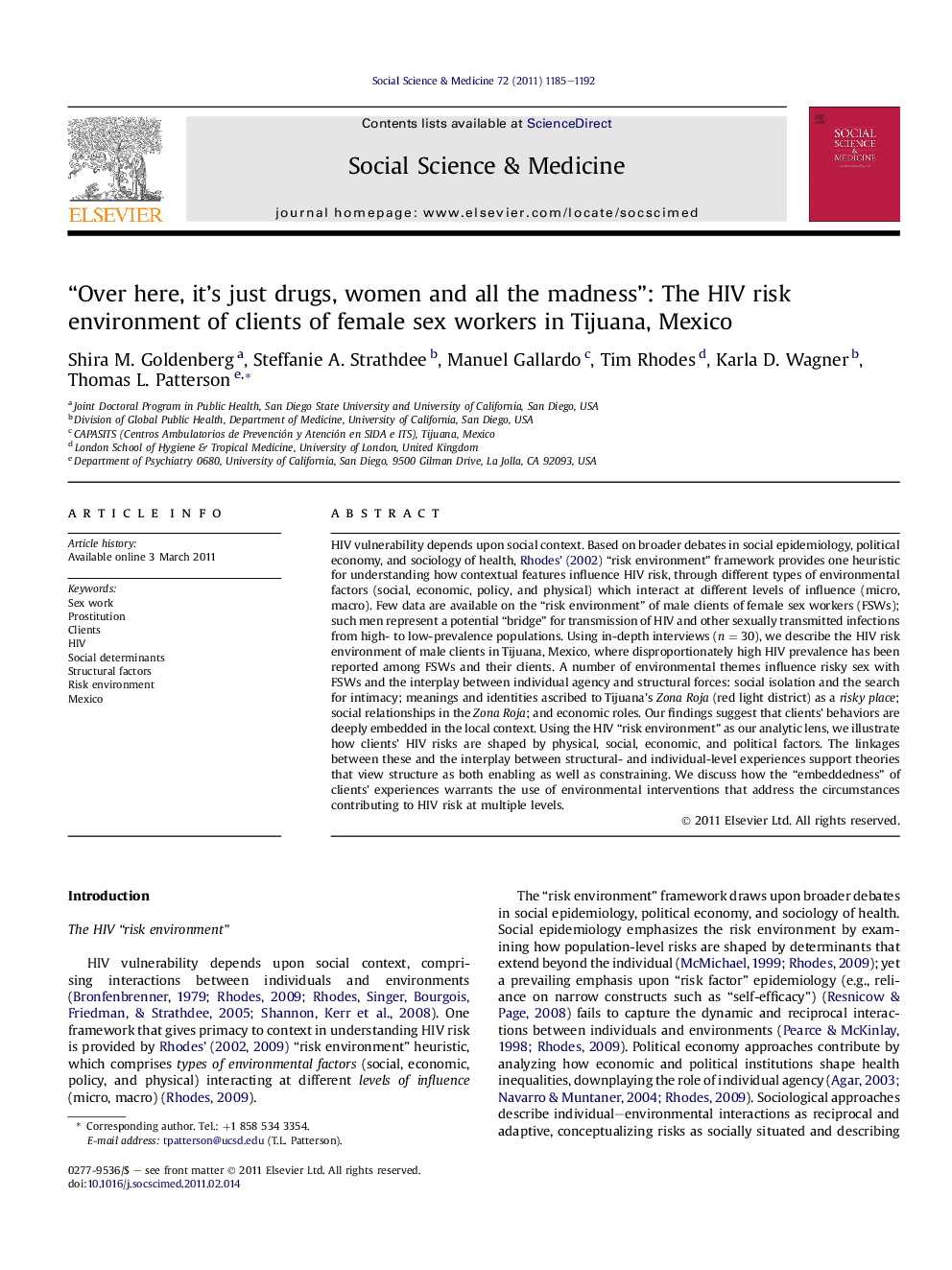| کد مقاله | کد نشریه | سال انتشار | مقاله انگلیسی | نسخه تمام متن |
|---|---|---|---|---|
| 952829 | 927541 | 2011 | 8 صفحه PDF | دانلود رایگان |

HIV vulnerability depends upon social context. Based on broader debates in social epidemiology, political economy, and sociology of health, Rhodes’ (2002) “risk environment” framework provides one heuristic for understanding how contextual features influence HIV risk, through different types of environmental factors (social, economic, policy, and physical) which interact at different levels of influence (micro, macro). Few data are available on the “risk environment” of male clients of female sex workers (FSWs); such men represent a potential “bridge” for transmission of HIV and other sexually transmitted infections from high- to low-prevalence populations. Using in-depth interviews (n = 30), we describe the HIV risk environment of male clients in Tijuana, Mexico, where disproportionately high HIV prevalence has been reported among FSWs and their clients. A number of environmental themes influence risky sex with FSWs and the interplay between individual agency and structural forces: social isolation and the search for intimacy; meanings and identities ascribed to Tijuana’s Zona Roja (red light district) as a risky place; social relationships in the Zona Roja; and economic roles. Our findings suggest that clients’ behaviors are deeply embedded in the local context. Using the HIV “risk environment” as our analytic lens, we illustrate how clients’ HIV risks are shaped by physical, social, economic, and political factors. The linkages between these and the interplay between structural- and individual-level experiences support theories that view structure as both enabling as well as constraining. We discuss how the “embeddedness” of clients’ experiences warrants the use of environmental interventions that address the circumstances contributing to HIV risk at multiple levels.
► Clients' HIV risks result from the interplay between individual agency and structural factors - especially U.S. deportation.
► In Tijuana, social isolation, place-based risk, social relationships, and economic roles influence clients' HIV risk.
► Interventions that address the circumstances contributing to HIV risk at multiple levels are needed for clients and FSW.
Journal: Social Science & Medicine - Volume 72, Issue 7, April 2011, Pages 1185–1192